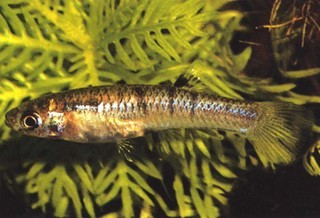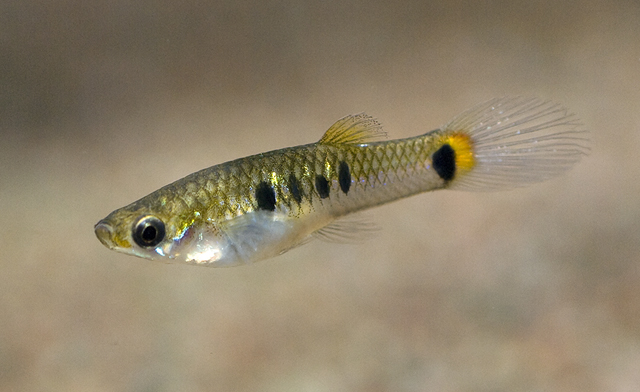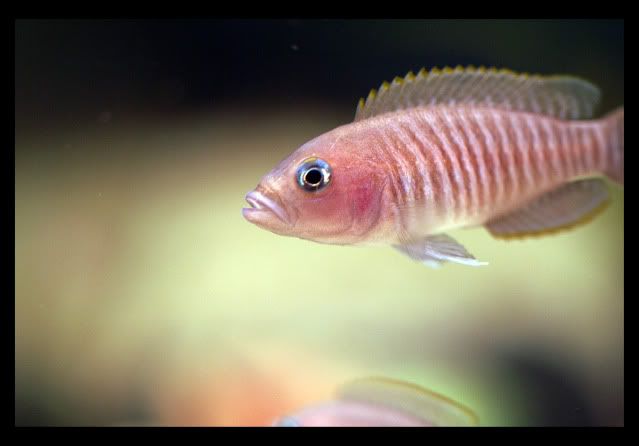Post by pezerologo on May 10, 2015 20:26:58 GMT
Hi everyone !!!!
This time we will get into the Mexican rainforest to know a biotope with a very popular species among lovers viviparous.
In the state of Chiapas near the border with Guatemala, we find the Lacantún river with its small tributaries.

Together in the Usumacinta River that will lead to over 400 km in the Pacific Ocean.
The Lacantún River is located in the municipality of Ocosingo, in a protected natural area known as Biosphere Reserve Blue Mountains, which connects to the rainforest of El Peten in Guatemala.
This region has a humid warm climate and warm humid, with frequent rainfall in summer. The average annual temperature is 22-28 ° C. With an annual rainfall between 1500-3000 mm. We can imagine that these courses carry water throughout the year, we err not even be a karst area, underground waters feeding systems.
The destruction of the environment through deforestation, modification of vegetation and soil erosion by different activities with pollution are the major threats.
Similarly, the introduction of alien species such as tilapia, carp and other large cichlids, and caused the loss of habitats of native species, seeing many cornered into smaller courses.
These rivers and streams move through a normally rocky soil, the few species of aquatic plants that thrive, we can find in the river backwaters, ponds and oxbow. In these zones it is where we can find the smallest or other species in juvenile stage. The larger swimming in the mainstream in most cases.
Usually covered detritus and algae, many species have adapted their diet to this offer.

The habitats and microhabitats more interesting to mimic in an aquarium is found when this river crosses the plateau Lacandon Jungle.
Famous for the Zapatista uprising of 1994 this forest offers an interesting fish fauna.

We intend to simulate the habitat is a medium river, where the pools with waterfalls abound, have a maximum width of 20 meters and a depth of 7 meters, although in many cases it is lower. The fund usually consists of gravel / sand, leaves, debris. with rocks and logs of different sizes. Surrounded by tropical rainforest vegetation in the water is usually marginal and develop only on the margins or areas with less depth.
Here we find different species of live-bearing, some well known, we will know later.
Now let's see how it should be a biotope aquarium of Lacantún river pools in Chiapas.
We begin with the size and shape of the tank. This time is not as important as the way of other examples, and we can use any standard aquarium.
A size from 200 liters is recommended if you want to keep several species. If we decide on one in particular, we will consider its size and habits to house properly.
Filtration will create efficient if too much current, being recommended an external filter canister type, or alternatively one of backpack.
Thus we deal the least possible space inside the aquarium.
Depending on the temperature of the room where we will place this aquarium, as well as our geographical location, we can dispense with the heater perfectly. If, however, our intention is to reproduce these species in a continuous manner (although it is advisable not to), so if you place a heater.
The temperature should be around 20-24 ° C, with a pH of 7.0-8.0.
Any type of lighting in the most common aquarium will serve in this example, even natural light.
This would favor the growth of algae which fall within these viviparous feeding.
Weekly water changes help maintain a healthy long aquarium.
The decoration will be composed of several large rocks, pebbles can be used for its characteristics that help to have a high pH. On the background desperdigaremos pebbles or boulders, gravel or sand ridges, with a trunk branches and leaves.
The back can paint the black or blue, as also place some paper or cardboard that we find in any bookstore.
The plants found in their biotope and also in shops usually are as follows.
Cabomba sp., Pondeteria sp., Potamogeton sp., Eichornia crassipes, Utricularia sp., Nymphaea sp. and Pistia stratiotes.
As you can see there are different types and should not cost you find some of these species.
Now let's see which fish could enter this example of biotope in the Mexican jungle.

Heterandria bimaculata is a peaceful vivíparous it reaches a maximum size of 8 cm. Many lives in aquatic environments with a preference to clear water, although it is also found in abundance in muddy waters. It is unusual in stores but if we could get through other fans or any association dedicated to viviparous. If we get are a very prolific species, so we have insured, keep this species for many years.

Poecilia mexicana is widespread both in mexico, as its scientific name suggests, as in other Central American countries. Live in very different environments from mountain streams 800 meters, as lagoons and estuaries where there is a high salinity.
Reaches a size of 9 cm and feeds on detritus, algae and small invertebrates that captures constantly pecking at the bottom and rocks. Will live in the bottom of the aquarium and adult specimens can reach more than 100 young sire. They breed throughout the year and we can get fry to share with other fans locally.

The black molly in its wild form is found in abundance in this region. The Poecilia sphenops is a very popular species that needs no introduction, but in its wild form is a great unknown. With a subtle coloration attractive but I understand, this fish other requirements share your ornamental brother.
Females reach a size of 12 cm and the male about 7. They usually give birth to 50 juveniles as adults and can be somewhat contentious.

If the Poeciliopsis fasciata entered the commercial circuit at this point I'm sure would be very successful. The small size of 2.5 cm in the male and just over 4 female, coupled with its attractive color pattern, would make him a candidate for so trendy nano aquariums. He likes to live in pools and side streams or rivers where the current is lower, usually near or marginal aquatic vegetation. It feeds based debris so we should not siphon excess the aquarium.
It is a very tolerant of environmental degradation in species and is found in highly polluted rivers and cities. That does not mean we should neglect their care or the quality of the aquarium water.
If we get this kind is a good idea to install it in an aquarium of 60-80 liters and get playing. With these practices will get to share species that usually are not in the shops.

Poeciliopsis pleurospilus with his body sprinkled with points attract attention among the different color patterns of other inhabitants of the aquarium.
The female reaches a size of 6 cm being the male in 3 cm. Like other livebearers of this river feeds on detritus, filamentous algae and insect larvae and other small invertebrates.
Prefers areas with little current and shallow.

With so many varieties of Xiphophorus helleri or swordtails, the natural way is often overlooked in the shops. Its attractive color and will be the focus of attention in this aquarium.
It reaches a maximum height of 7.5 cm and occupies diverse habitats, being quite widespread in the region and surrounding areas.
Adults prefer areas with current, not fry and juveniles who prefer more sheltered and quiet areas.
Moreover being an old acquaintance that appears in any book of aquarium, their requirements are similar to the commercial variety.
Like the addition of fresh water so we must make changes weekly.
And with that we end this example Aquarium pools in the Lacantún River of Lacandona Jungle.
I hope you liked it and have enjoyed reading it. Mounting an aquarium as the example, we have an underwater window into this privileged place in the world.
Encourage them to answer or ask any question or doubt. Likewise if you are new and have fallen here by chance, join the forum where every day we try to learn something new.
Gr3tings !!!
Sources
www.fishbase.org
www.wikipedia.org
Atlas Mergus I&II
-Peces de la Reserva de la Biosfera Selva
El Ocote, Chiapas, México.
Manuel de Jesús Anzueto Calvo. Ernesto Velázquez Velázquez. Adán Enrique Gómez González. Rebecca María Quiñones. Brenda Joyce Olson.
-Inventario ictiofaunístico en tres regiones hidrológicas prioritarias de la Cuenca del Grijalva-Usumacinta en el estado de Chiapas - Dra. Ma. del Rocío Rodiles Hernández
-Lista de Peces Continentales de Chiapas, México - Rocío Rodiles-Hernández, Alfonso A. González-Díaz y Celedonio Chan-Sala
This time we will get into the Mexican rainforest to know a biotope with a very popular species among lovers viviparous.
In the state of Chiapas near the border with Guatemala, we find the Lacantún river with its small tributaries.

Together in the Usumacinta River that will lead to over 400 km in the Pacific Ocean.
The Lacantún River is located in the municipality of Ocosingo, in a protected natural area known as Biosphere Reserve Blue Mountains, which connects to the rainforest of El Peten in Guatemala.
This region has a humid warm climate and warm humid, with frequent rainfall in summer. The average annual temperature is 22-28 ° C. With an annual rainfall between 1500-3000 mm. We can imagine that these courses carry water throughout the year, we err not even be a karst area, underground waters feeding systems.
The destruction of the environment through deforestation, modification of vegetation and soil erosion by different activities with pollution are the major threats.
Similarly, the introduction of alien species such as tilapia, carp and other large cichlids, and caused the loss of habitats of native species, seeing many cornered into smaller courses.
These rivers and streams move through a normally rocky soil, the few species of aquatic plants that thrive, we can find in the river backwaters, ponds and oxbow. In these zones it is where we can find the smallest or other species in juvenile stage. The larger swimming in the mainstream in most cases.
Usually covered detritus and algae, many species have adapted their diet to this offer.

The habitats and microhabitats more interesting to mimic in an aquarium is found when this river crosses the plateau Lacandon Jungle.
Famous for the Zapatista uprising of 1994 this forest offers an interesting fish fauna.

We intend to simulate the habitat is a medium river, where the pools with waterfalls abound, have a maximum width of 20 meters and a depth of 7 meters, although in many cases it is lower. The fund usually consists of gravel / sand, leaves, debris. with rocks and logs of different sizes. Surrounded by tropical rainforest vegetation in the water is usually marginal and develop only on the margins or areas with less depth.
Here we find different species of live-bearing, some well known, we will know later.
Now let's see how it should be a biotope aquarium of Lacantún river pools in Chiapas.
We begin with the size and shape of the tank. This time is not as important as the way of other examples, and we can use any standard aquarium.
A size from 200 liters is recommended if you want to keep several species. If we decide on one in particular, we will consider its size and habits to house properly.
Filtration will create efficient if too much current, being recommended an external filter canister type, or alternatively one of backpack.
Thus we deal the least possible space inside the aquarium.
Depending on the temperature of the room where we will place this aquarium, as well as our geographical location, we can dispense with the heater perfectly. If, however, our intention is to reproduce these species in a continuous manner (although it is advisable not to), so if you place a heater.
The temperature should be around 20-24 ° C, with a pH of 7.0-8.0.
Any type of lighting in the most common aquarium will serve in this example, even natural light.
This would favor the growth of algae which fall within these viviparous feeding.
Weekly water changes help maintain a healthy long aquarium.
The decoration will be composed of several large rocks, pebbles can be used for its characteristics that help to have a high pH. On the background desperdigaremos pebbles or boulders, gravel or sand ridges, with a trunk branches and leaves.
The back can paint the black or blue, as also place some paper or cardboard that we find in any bookstore.
The plants found in their biotope and also in shops usually are as follows.
Cabomba sp., Pondeteria sp., Potamogeton sp., Eichornia crassipes, Utricularia sp., Nymphaea sp. and Pistia stratiotes.
As you can see there are different types and should not cost you find some of these species.
Now let's see which fish could enter this example of biotope in the Mexican jungle.

Heterandria bimaculata is a peaceful vivíparous it reaches a maximum size of 8 cm. Many lives in aquatic environments with a preference to clear water, although it is also found in abundance in muddy waters. It is unusual in stores but if we could get through other fans or any association dedicated to viviparous. If we get are a very prolific species, so we have insured, keep this species for many years.

Poecilia mexicana is widespread both in mexico, as its scientific name suggests, as in other Central American countries. Live in very different environments from mountain streams 800 meters, as lagoons and estuaries where there is a high salinity.
Reaches a size of 9 cm and feeds on detritus, algae and small invertebrates that captures constantly pecking at the bottom and rocks. Will live in the bottom of the aquarium and adult specimens can reach more than 100 young sire. They breed throughout the year and we can get fry to share with other fans locally.

The black molly in its wild form is found in abundance in this region. The Poecilia sphenops is a very popular species that needs no introduction, but in its wild form is a great unknown. With a subtle coloration attractive but I understand, this fish other requirements share your ornamental brother.
Females reach a size of 12 cm and the male about 7. They usually give birth to 50 juveniles as adults and can be somewhat contentious.

If the Poeciliopsis fasciata entered the commercial circuit at this point I'm sure would be very successful. The small size of 2.5 cm in the male and just over 4 female, coupled with its attractive color pattern, would make him a candidate for so trendy nano aquariums. He likes to live in pools and side streams or rivers where the current is lower, usually near or marginal aquatic vegetation. It feeds based debris so we should not siphon excess the aquarium.
It is a very tolerant of environmental degradation in species and is found in highly polluted rivers and cities. That does not mean we should neglect their care or the quality of the aquarium water.
If we get this kind is a good idea to install it in an aquarium of 60-80 liters and get playing. With these practices will get to share species that usually are not in the shops.

Poeciliopsis pleurospilus with his body sprinkled with points attract attention among the different color patterns of other inhabitants of the aquarium.
The female reaches a size of 6 cm being the male in 3 cm. Like other livebearers of this river feeds on detritus, filamentous algae and insect larvae and other small invertebrates.
Prefers areas with little current and shallow.
With so many varieties of Xiphophorus helleri or swordtails, the natural way is often overlooked in the shops. Its attractive color and will be the focus of attention in this aquarium.
It reaches a maximum height of 7.5 cm and occupies diverse habitats, being quite widespread in the region and surrounding areas.
Adults prefer areas with current, not fry and juveniles who prefer more sheltered and quiet areas.
Moreover being an old acquaintance that appears in any book of aquarium, their requirements are similar to the commercial variety.
Like the addition of fresh water so we must make changes weekly.
And with that we end this example Aquarium pools in the Lacantún River of Lacandona Jungle.
I hope you liked it and have enjoyed reading it. Mounting an aquarium as the example, we have an underwater window into this privileged place in the world.
Encourage them to answer or ask any question or doubt. Likewise if you are new and have fallen here by chance, join the forum where every day we try to learn something new.
Gr3tings !!!
Sources
www.fishbase.org
www.wikipedia.org
Atlas Mergus I&II
-Peces de la Reserva de la Biosfera Selva
El Ocote, Chiapas, México.
Manuel de Jesús Anzueto Calvo. Ernesto Velázquez Velázquez. Adán Enrique Gómez González. Rebecca María Quiñones. Brenda Joyce Olson.
-Inventario ictiofaunístico en tres regiones hidrológicas prioritarias de la Cuenca del Grijalva-Usumacinta en el estado de Chiapas - Dra. Ma. del Rocío Rodiles Hernández
-Lista de Peces Continentales de Chiapas, México - Rocío Rodiles-Hernández, Alfonso A. González-Díaz y Celedonio Chan-Sala

